February 28, 2010
February 27, 2010
Porters on Baltoro Glacier on way to Concordia, Pakistan
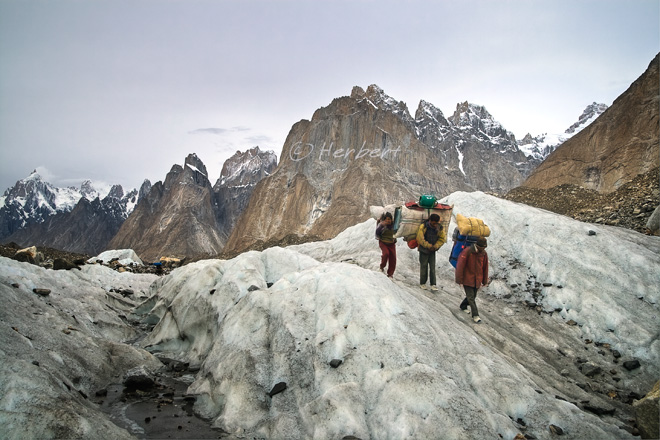
Location: On Baltoro Glacier, Concordia, Pakistan (35° 43' 60 N 76° 16' 60 E)
Date: 6 July 2007; 7.25am
Camera: Canon 400D with Sigma 17-70/f2.8-4.5
I have never been on an expedition-type trek until the trek to Concordia/K2. All my previous treks including those in the Himalayas, China, NZ, South East Asia and so on are mainly without guides or porters. Even if there are guides involved, there are no porters to carry our belongings. So the trek to Concordia was a new experience, and quite an interesting one. As there are no villages or any means to get food/water all the way to K2 Base Camp, all the supplies must be carried for the 10+ days return trek. Similarly all the necessary cooking and eating utensils as well as bedding needs (tents and sleeping bags etc) must be brought on the trek. There were about 10 of us and we had up to 30+ porters at the beginning of the trek. The number slowly dwindles as some were sent back along the way as supplies were consumed- the porters are aware that their services are only needed for part of the trek. This is important as they are paid by the days (and distance); so it is necessary that they know what they are going to be paid for- unlike some stories that I heard in Nepal where trekkers engaged guides/porters for a certain trek but send them back when they met friends on the trek and decide to pool their resources by using less guides/porters. This is rather unethical and is rumoured to be common practice by trekkers of particular nationalities. Porters make a hard living and they are an essential and important component of long and arduous treks, and more so, on climbing and other expeditions. They should and must be treated with respect.
February 25, 2010
Despite changes, Qing architecture stays in Beijing

Location: Qianmen Metro Station, Beijing, China (139°53'36"N 116°23'30"E°)
Date: 20 December 2009; 6.10pm
Camera: Canon 400D with Sigma 17-70/f2.8-4.5
The world’s weather is going haywire these days. I was in Beijing at the end of December amidst its coldest winter. I flew from a warm 32C of Singapore and landed in the freezing –16C of Beijing five hours later. However it was not as cold as it sounds. Somehow when one is psychologically prepared, the effect is softened. Beijing is changing every day. When I visited the city the first time back in 1999, it was still in the first phase of development where all the skyscrapers along the main commercial road, Chang’an Lu, are just starting their foundations. The whole road is like a war zone with building materials, rubble all spilling into the main road. Fast forward nine years later in 2008, Beijing is a modern sparkling city, rivalling the best anywhere on Earth. This time around, the city feels like somewhere in USA in the winter but very much feeling like Hong Kong amongst the fashionable crowds and high-rise in the Central Business District, especially at night when all the buildings are lighted up.
February 23, 2010
Singapore Flyer, world’s largest Ferris wheel so far
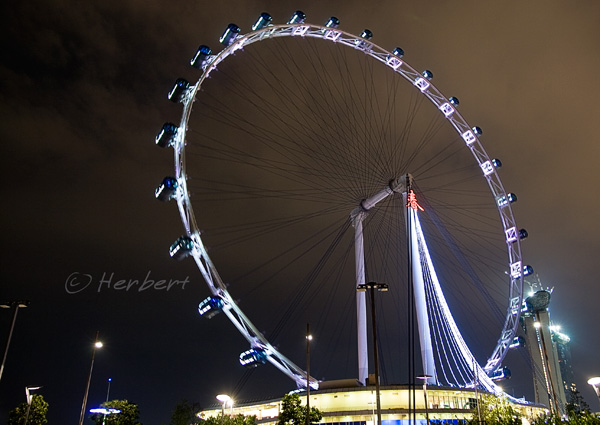
Location: Singapore Flyer Singapore (1°17'21.53"N 103°51'47.03"E)
Date: 22 February 2010; 8.10pm
Camera: Canon 400D with Sigma 17-70/f2.8-4.5
Singapore is in the midst of transforming itself, physically, socially as well as economically. Socially by encouraging more immigration of skilled and professionals, dubbed “foreign talents” into the country to counter the low birth rate of Singaporeans, economically by restructuring and encouraging local companies to grow bigger regionally as well as intensified training of its workforce and physically by developing more iconic landmarks as well as improving and redeveloping existing localities. One of the newer attractions on the island is the so-called Singapore Flyer, which is supposedly the largest Ferris wheel in the world. The attraction had been in operation for about 1.5 years but is struggling to attract visitors.
February 20, 2010
Trekking among giant peaks and fog in Sichuan, China
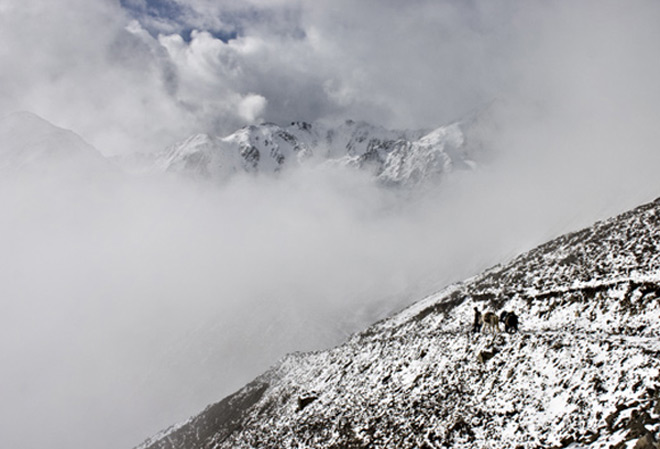
Location: Tsemi Pass 子梅山埡口 to Minya Konka Monastery, Sichuan, China (29°31'7.04"N 101°43'13.60"E)
Date: 25 October 2006, 9.40pm
Camera: Canon 300D with kit lens
If you are an avid trekker or outdoor person, China has many exciting treks to offer. Many of the more popular and high-attitude treks are in provinces such as Yunnan, Sichuan, Xinjiang and Tibet. As with most other Chinese destinations, once they are “discovered” by the Chinese populations, these destinations invariably become more “commercialised” with makeshift accommodation and food stalls set up- even in very harsh and remote locations. These places also tend to get swamped by Chinese tourists (in the case of treks, more adventurous trekkers from the cities, who come “dressed to kill” with spanky new outdoor outfits that they do not know their functionalities or even ho to use). It is not a bad thing to have commerce activities in such places- convenience such as not needing to bring tents or food supplies- as long as they respect the environment, which sadly is not the norm. Hence one will find heaps of rubbish, human waste and structures being erected indiscriminately. One of the short multi-days interesting treks to do in Sichuan is the trek to Minya Konka Monastery (part of the route to the summit of Minya Konka, the highest peak in Sichuan). One can read about the trekking route and attractions in these articles. One of the highlight of the trek is to see the Minya range from the high pass of Tsemi Pass 子梅山埡口 at 4,440m. However one have to be real lucky to do so as the pass is well-known for poor visibility due to fog, as can be seen in the photo.
February 18, 2010
Buddha head in banyan tree, Ayutthaya, Thailand
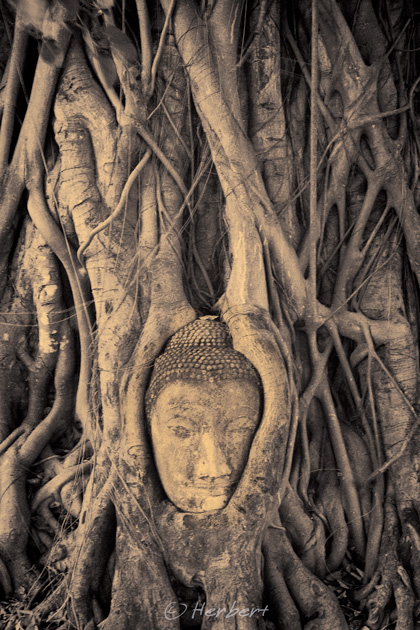
Location: Wat Mahathat, Ayutthaya, Thailand (14°22'14.81"N 100°33'38.23"E)
Date: 26 October 2009, 10.15am
Camera: Canon 400D with Sigma 17-70/f2.8-4.5
Tourism is one of the biggest foreign income earners for Thailand. One could probably see as many foreigners (farangs) in Thailand as a cosmopolitan place like Singapore. The main reason is of course, the huge variety of attractions in the country- fabulous beaches and islands in the south, mesmerising temples and history in the Central Plains, unique Thai culture, mouth-watering Thai cuisine, abundant variety, creative and cheap shopping and last but not least, incredibly inclusive and friendly Thai hospitality. It would be a lie not to mention that its sex industry is also a draw for a certain category of tourists. One of the major attractions in the Central Plains is the town of Ayutthaya. Its close and easy access from Bangkok (less than an hour and very regular trains) is one major reason. However its easygoing small town character, just an hour from Bangkok do attracts many travellers who just want to get away from the big city. The major attraction here is the UNESCO Site of the Historic City of Ayutthaya, which is a collection of ancient wats/temples. Many with characteristic prangs or towering shrines restored to their previous glory. Ayutthaya which was founded around 1350 is the second Siamese capital (after Sukhotai, another UNESCO Site in Thailand) but was destroyed by the Burmese in the 18th century. A poignant remain of the destruction and one of the most recognisable symbols of Ayutthaya is the severed Buddha head statue embedded in the roots of a banyan tree.
February 16, 2010
The wild beauty at Glenorchy, South Island, NZ
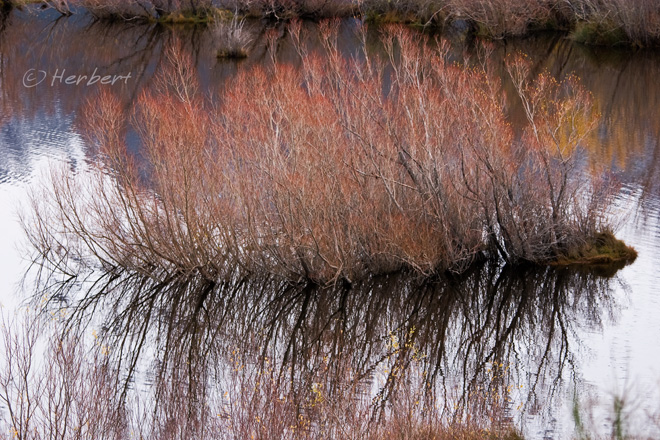
Location: Glenorchy Lagoon, Glenorchy, South Island, New Zealand (44°50'37.36"S 168°23'38.12"E)
Date: 21 May 2009, 4.40pm
Camera: Canon 400D with Sigma 17-70/f2.8-4.5
I have written before that Glenorchy is fast becoming very popular as the outdoor set for many adventure movies with emphasis on wild and beautiful landscape. It is also fast becoming known to adventure travelers as a playground. This will come as no surprise to Kiwis as they have long known the beauty, ruggedness and potential of this place- any trampers to the fabulous trails of Routeburn, Rees and Dart have to start their journey from here. It has snow-covered mountains, lakes, rivers as well as incredible wildlife and flora. I could spend weeks here without any problems- as long as I can also access my internet.
February 14, 2010
Moonscape of the Zanskar range, Ladakh, India

Location: Lamayuru, Ladakh, India (34° 16′ 58″ N, 76° 46′ 28″ E)
Date: 12 August 2009 8.15am
Camera: Canon 400D with Canon EF 70-200 mm F4L IS USM lens
Lamayuru monastery is one of the largest and oldest monasteries in India. It is situated about 3,800m above sea level in the Zanskar range with mountains of dramatic rock composition and structure. Such dramatic landscape is commonly referred to as Moonscape, with rocks varying from sedimentary to volcanic and colours from golden yellow, green, grey and bluish. It is a very dry area as all the monsoon rains are dumped while the clouds climbed the high Himalayan range. It is a land of dramatic and harsh beauty.
February 12, 2010
Old-fashion full wooden swing, Baoshan Yunnan, China
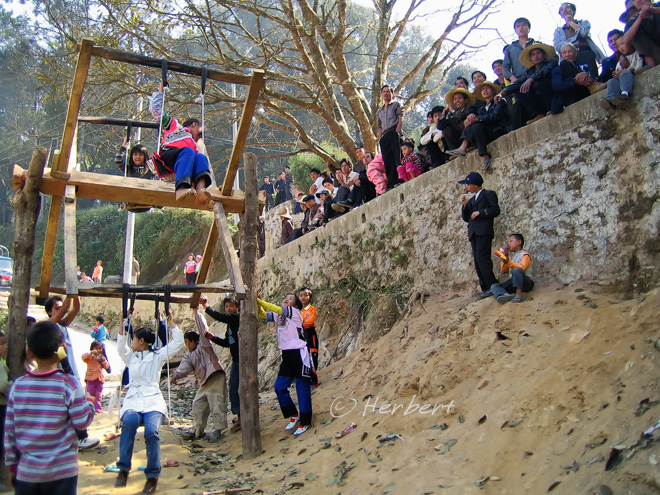
Location: Baoshan, Yuanyang, Yunnan, China (23° 9' 15 N 102° 44' 52 E)
Date: 25 February 2007, 4.20pm
Camera: Canon 400D with Sigma 17-70/f2.8-4.5
Lunar New Year is not only celebrated by Chinese or more accurately, Hans. It is a festival that is also celebrated by many races and nationalities that are influenced by the Chinese culture- Vietnamese, Koreans, to mention a few- also celebrate Lunar New Year (LNY) in a big way. So it is not surprising that many of the ethnic minorities in China also celebrate a variant of the same.
The Yi is a minority residing predominantly in the south and southwest of China including Yunnan, Guizhou, Guangxi etc. They have different custom and a different tradition for LNY celebration. One of them is the Dragon Feast celebration which falls on the 8th day of the LNY. It is a boisterous event where residents of villages will have great fun doing all sort of things, including games, dancing, singing and of course voluminous of rice wine and feasting.
February 8, 2010
Lanterns and other Chinese New Year decorations- Singapore
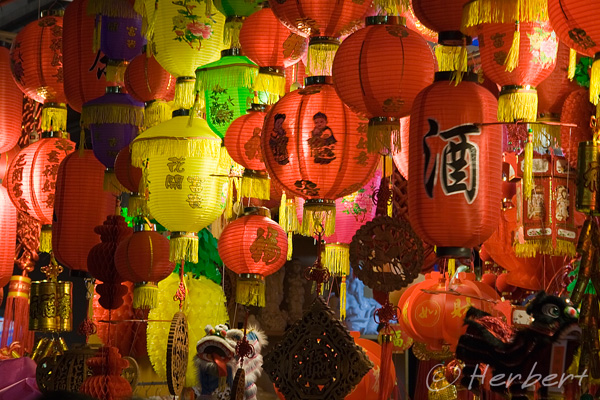
Location: Chinatown, Singapore (1°17'2.30"N,103°50'35.60"E)
Date: 6 February 2009; 8.20pm
Camera: Canon 400D with Sigma 17-70/f2.8-4.5
It’s that time of the year again- coming close to the Lunar/Chinese New Year (CNY). As usual, in most Asian countries where there is a large Chinese population, this is one of the most joyous festival and shoppers throng shops and stalls that sell CNY goodies and decorations. This coming CNY falls on 14 February and is the year of the Tiger- one of the most feared (and perhaps respected) animals in the Chinese Horoscope. Most Chinese couple getting married will rush to do so before the Year of the Tiger because it is apparently not-so-auspicious for such events. But of course, there will still be millions of Chinese marriages in the Tiger year- not everyone is superstitious.
February 4, 2010
Putto and dolphin at the Neptune Square, Bologna, Italy
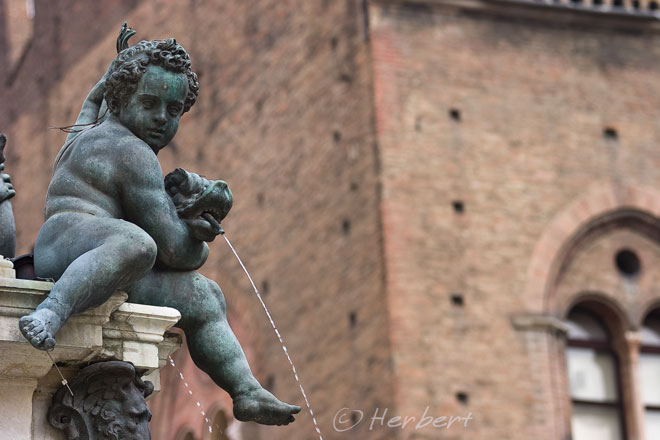
Location: Neptune Fountain, Piazza del Nettuno, Bologna, Italy (44° 30′ 27″ N, 11° 21′ 5″ E)
Date: 19 March 2005; 11.25am
Camera: Canon 300D with kit lens
Bologna, the "Red City" is a nice city to spend a day or two. It has fantastic culinary delights, including the famous Bolognaise sauce, at very reasonable prices. One of the reasons is that it is a university town- the oldest university in the West is located here. There are many cafes and restaurants set up in the open spaces of the Di Maggio Square in the city centre, offering delightful outdoor casual dining. Right next to this is the Neptune Fountain with the readily recognizable bronze figure of Neptune. Another delightful sculpture in the square is the little Putto and dolphin, with water sprouting from the mouth of the dolphin.
February 1, 2010
Angkor Wat at dawn, Siem Reap, Cambodia
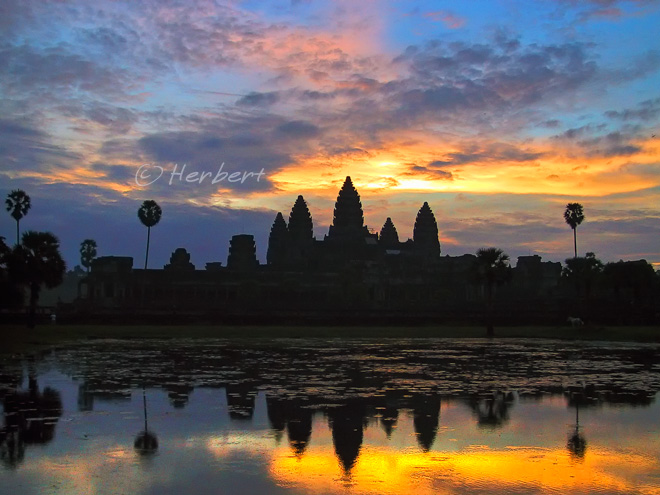
Location: Angkor Wat, Siem Reap, Cambodia (13° 26′ 31″ N, 103° 51′ 35″E)
Date: 12 November 2002; 6.15am
Camera: Canon G1
To many people, the only reason to go to Cambodia is to visit the magnificent Angkor Wat complex- and I can’t blame them. Angkor Wat is indeed an incredible piece of architecture. Recent studies have postulated that the might of Angkor was due to its advance engineering technology in storing rain water in the various reservoirs (barays) for agricultural use in the drought; and its demise was due to losing this edge as a result of loose maintenance. I visited the place about 8 years ago when transport was not very developed and was quite an effort for a budget traveller like myself. Things are different now in terms of Siem Reap’s connectivity. Perhaps it is time to revisit the monument and to go further afield to places such as Kbal Spean in the Kulen Hills where Hindu deities were carved in stones in the river.

















